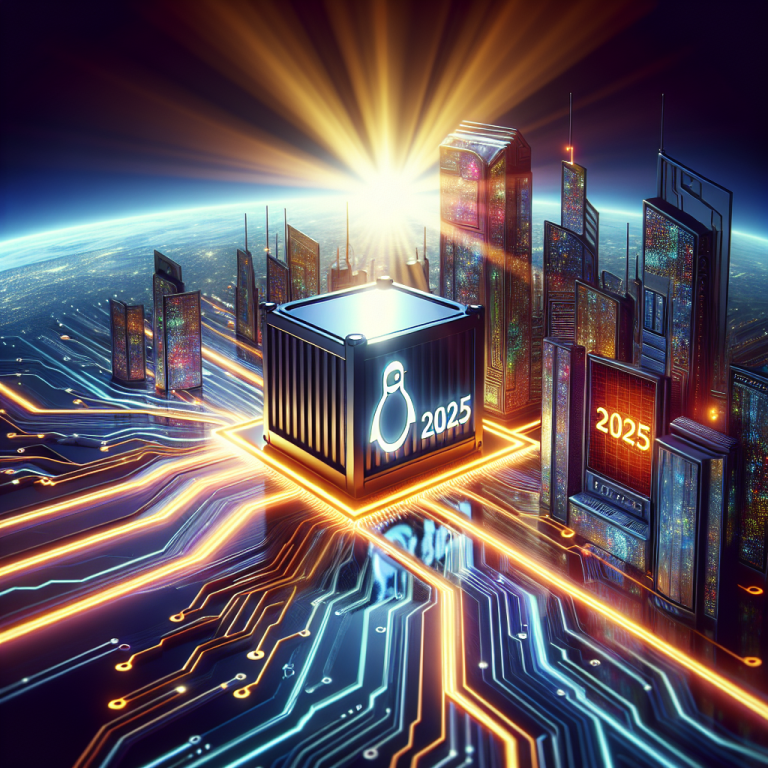Revolutionizing Data Centers: The Essential Role of Intelligent Energy Solutions for Efficiency and Sustainability
Driving Efficiency and Sustainability in Data Centers with Smart Energy Solutions
As we usher in an era full of transformative technologies such as AI and cryptocurrencies, the energy demands of data centers have surged to unprecedented levels. Projections suggest that electricity consumption by data centers could more than double by 2030, according to the International Energy Agency. In response, the imperative for intelligent energy management has emerged front and center on the agendas of data center operators.
The Importance of Intelligent Energy Management
Intelligent energy management is more than just a cost-saving initiative—it's about creating a sustainable infrastructure that can support the evolving needs of critical workloads. By measuring, monitoring, and optimizing energy usage, operators can unlock not only significant savings but also foster operational efficiency and enhance business resilience. Moreover, evolving regulations mandate a more accountable approach to energy consumption and sustainability practices.
Cisco is leading the charge in intelligent energy solutions with a comprehensive strategy that integrates high-performance digital infrastructure with state-of-the-art energy management techniques.
Key Components of Cisco's Energy Management Strategy
-
Real-Time Energy Monitoring and Optimization
Gaining insight into real-time energy consumption is crucial for managing costs and ensuring compliance. Cisco’s advanced monitoring capabilities enable data center teams to establish a baseline for energy management through metrics such as:
- Energy consumption (kWh)
- Total greenhouse gas (GHG) emissions
- Carbon intensity (grams of CO2e per kWh)
- Energy cost (USD)
- Energy mix from low carbon sources (%)
Platforms like the Cisco Nexus Dashboard and integration with tools such as Cisco Splunk allow teams to monitor these metrics, detect anomalies, cut costs, and strategically plan for a more energy-efficient digital future.
-
AI-Driven Optimization and Recommendations
Reliability is paramount in data centers. With AI-driven real-time analytics, operators can access actionable insights that inform energy-saving strategies. These insights can alert teams to unusual patterns in power usage, identify underutilized servers, and suggest intelligent energy-saving methods. With predictive analytics, teams can maximize resource utilization while ensuring cost-effectiveness as workloads grow in complexity.
-
Dynamic Energy Efficiency and Control
As data center demands evolve, so must the strategies to meet them. Cisco is developing a smart power management framework that provides flexibility across its hardware. This framework encompasses power management modes—performance, low-power, and shipping mode—allowing teams to automate workflows and optimize energy performance.
The Path Forward: Sustainable and Efficient Data Centers
Cisco’s energy management strategy is crafted with an unwavering commitment to sustainability and innovation, paving the way for a more sustainable digital future. This approach allows data centers to:
- Reduce operational and capital costs
- Enhance resilience
- Improve security measures
- Maximize return on investment for AI infrastructure
- Increase energy availability through efficient energy utilization
Conclusion
As data center operations face the daunting challenge of skyrocketing energy demands, the integration of intelligent energy solutions is no longer optional—it's a necessity. Cisco’s innovative strategies and tools are redefining energy management as a strategic enabler for data center modernization, setting customers on a path toward achieving their sustainability and efficiency goals.
Unlock the full potential of your data center by investing in smart energy solutions today, and be part of a sustainable future where technology and environmental responsibility coalesce.
Discover the benefits of a more sustainable IT infrastructure.






